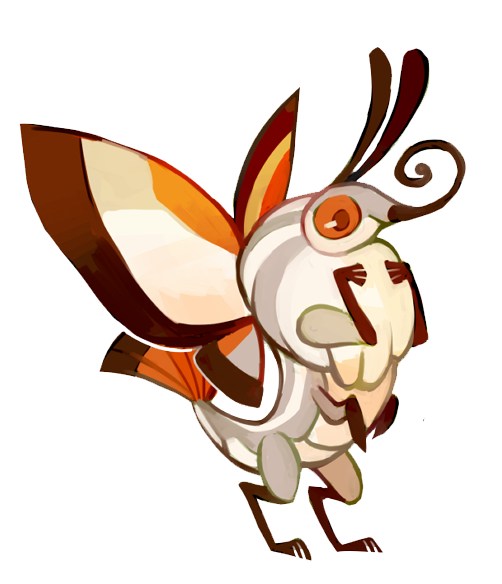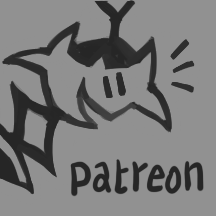Powderwing

The wings of these moths are covered in a fine dust which can be helpful or harmful. Often this dust is used in medicine.
Climate preferences: Powderwings can typically survive in any climate where they are not subjected to extreme heat or cold. The most favorable environments would be sheltered, forested areas that are not too moist or dry. While they can happily take up residence in a large city, a Powderwing must take time to become adjusted and conditioned to the various lights and activity during the night.
Ability to Plan/Abstract: Approximately 90% of Powderwings are capable of higher-level thinking, such as the ability to plan ahead, to reason, rationalize, and to understand abstract concepts and principles. This seems to be related to physical size, as full-grown Powderwings under 18 inches tall will almost always lack higher-level intelligence.
Elements
Common: Air is by far the most common affinity seen in Powderwings, followed by the various subtypes of Air. Also fairly common are Spirit subtypes such as Sound and Poison, as well as Earth.
Weaknesses:
Fire: Powderwings are highly susceptible to extreme temperatures, and can be damaged greatly by fire. Their wings and antennae seem to be especially flammable.
Ice: In cold weather a Powderwing will be much less active, and may be incapacitated by long exposure to very low temperatures.
Water: If a Powderwing’s wings are soaked, it will be unable to fly. As a result, they are often uncomfortable around large amounts of liquid and tend to stay inside or within shelter during rainy weather.
Light: Powderwings are naturally nocturnal, and will typically be uncomfortable under strong sunlight. Additionally, they can be mesmerized by sources of bright light (especially colored lights) and will remain transfixed until interrupted or the light source is removed.
Resistances:
Air: Almost all Powderwings are resistant to Air and its subtypes, with some exceptions existing.
Poison: Many Powderwings are immune to various types of poison, but the level of immunity can depend on an individual basis.
Trivia
-
Powderwing wings are coated in a fine dust that consists of tiny shed scales. This powder assists in regulating heat as well as smoothing airflow over the wing during flight. Depending on the affinity of the individual, the powder can also have a variety of affects when inhaled ranging from healing to harmful. Because of this, Powderwing Powder is often used in various medicines.
-
The original native location of Powderwings is highly debated, as many populations have existed in different locations for countless generations. Differences from area to area include variations in size, language, and increased tendencies to have certain affinities.
-
Young Powderwings hatch from eggs and emerge in a caterpillar state. At this time they are quite delicate and vulnerable, and must be protected by their parents or other caretakers. Once this juvenile stage is complete, the caterpillars form cocoons where they stay for a number of weeks, growing into their “adult” body. After this, it will still take some time before the Powderwing is considered fully-grown.
-
Powderwings can typically produce offspring with any insect-like species, or species bearing insect characteristics (such as Manticores). Children produced with a species that lacks wings will rarely inherit wings from their Powderwing parent, but the chances increase after multiple generations.
-
As mentioned above, Powderwings have a tendency to be mesmerized when in the proximity to bright lights. Nearly all Powderwings exhibit this behavior, although occasionally an individual will prove to be unaffected. Most Powderwings are also very susceptible to hypnosis, and immunity to hypnosis is nearly always paired with immunity to bright lights.





![[Beleth looking bored]](https://floraverse.com/static/images/global-title-foreground-left.png)

![[Andre looking proud of his graffiti]](https://floraverse.com/static/images/global-title-foreground-right.png)






